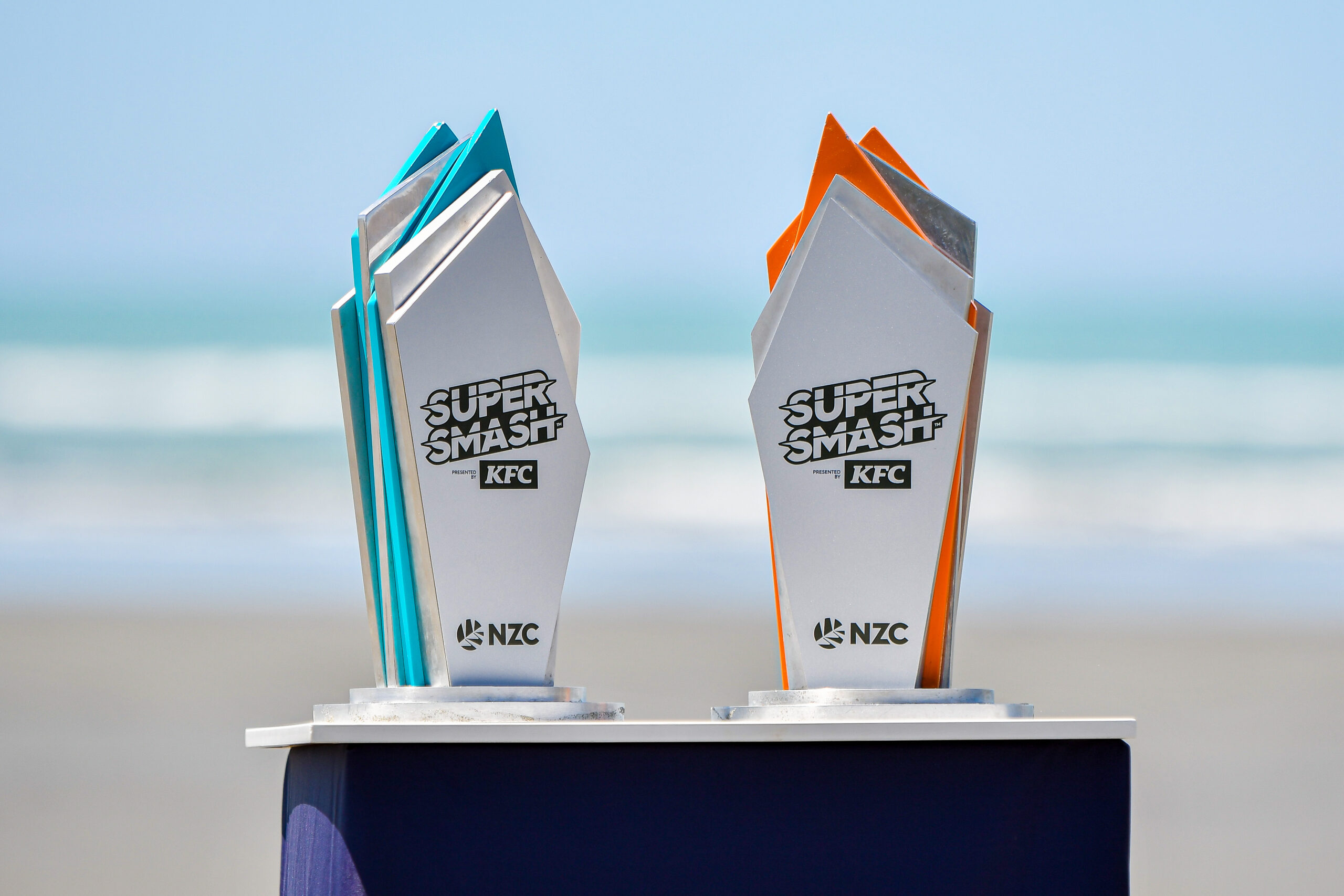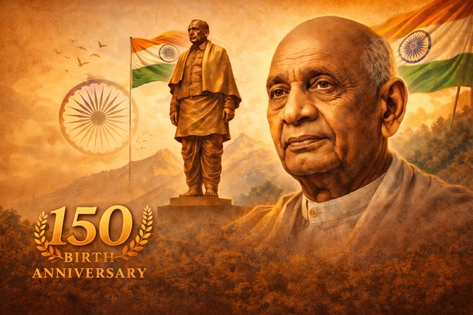Boxing Day signals the first games of the fresh Super Smash season, with Northern Brave men and the Auckland Aces opening the bill in Hamilton, followed by the Hearts and Brave women under lights.
Scroll down for the women’s…

Boxing Day signals the first games of the fresh Super Smash season, with Northern Brave men and the Auckland Aces opening the bill in Hamilton, followed by the Hearts and Brave women under lights.
Scroll down for the women’s…

Life and Works of Sardar Vallabhbhai Patel (1953). Parshotam Das Saggi, (Ed.). Overseas Publishing House. Pages: 278. Price: Rs.1833.
As India commemorates the 150th birth anniversary of its “Iron Man”, Sardar Vallabhbhai Jhaverbhai Patel, the…
Soto-Ferrari, M., Bhattacharyya, K., Schikora, P. & POST-BaLSTM: A bagged LSTM forecasting ensemble embedded with a postponement framework to target the semiconductor shortage in the automotive industry. Comput. Ind. Eng. 185, 109602 (2023).
Lee, K. H., Abdollahian, M., Schreider, S. & Taheri, S. Supply chain demand forecasting and price optimisation models with substitution effect. Mathematics 11, 1–28 (2023).
Wang, C. H. & Chen, T. Y. Combining biased regression with machine learning to conduct supply chain forecasting and analytics for printing circuit board. Int. J. Syst. Sci. Oper. Logist. 9, 143–154 (2022).
Huber, J. & Stuckenschmidt, H. Daily retail demand forecasting using machine learning with emphasis on calendric special days. Int. J. Forecast. 36, 1420–1438 (2020).
Weng, T., Liu, W. & Xiao, J. Supply chain sales forecasting based on LightGBM and LSTM combination model. Ind. Manag Data Syst. 120, 265–279 (2020).
Omar, H., Klibi, W., Babai, M. Z. & Ducq, Y. Basket data-driven approach for omnichannel demand forecasting. Int. J. Prod. Econ. 257, 108748 (2023).
Panda, S. K. & Mohanty, S. N. Time series forecasting and modeling of food demand supply chain based on regressors analysis. IEEE Access. 11, 42679–42700 (2023).
Noh, J., Park, H. J., Kim, J. S. & Hwang, S. J. Gated recurrent unit with genetic algorithm for product demand forecasting in supply chain management. Mathematics 8, (2020).
Li, K. et al. Capacity and output power Estimation approach of individual behind-the-meter distributed photovoltaic system for demand response baseline Estimation. Appl. Energy. 253, 113595 (2019).
Li, G. & Zhong, X. Parking demand forecasting based on improved complete ensemble empirical mode decomposition and GRU model. Eng. Appl. Artif. Intell. 119, 105717 (2023).
Kim, Y. & Park, K. Outlier-Aware demand prediction using recurrent neural Network-Based models and statistical approach. IEEE Access. 11, 129285–129299 (2023).
Chung, J., Gulcehre, C., Cho, K. & Bengio, Y. Empirical Evaluation of Gated Recurrent Neural Networks on Sequence Modeling. 1–9. At http://arxiv.org/abs/1412.3555 (2014)
Saeed, N., Nguyen, S., Cullinane, K., Gekara, V. & Chhetri, P. Forecasting container freight rates using the prophet forecasting method. Transp. Policy. 133, 86–107 (2023).
Bommidi, B. S., Teeparthi, K. & Kosana, V. Hybrid wind speed forecasting using ICEEMDAN and transformer model with novel loss function. Energy 265, 126383 (2023).
Tian, Z., Liu, W., Jiang, W. & Wu, C. CNNs-Transformer based day-ahead probabilistic load forecasting for weekends with limited data availability. Energy 293, 127019 (2024).
Zhou, H. et al. Beyond Efficient Transformer for Long Sequence Time-Series Forecasting. (2021).
Zhou, T., Wen, Q., Wang, X., Sun, L. & Jin, R. FEDformer: Frequency Enhanced Decomposed Transformer for Long-term Series Forecasting. (2022).
Fan, H. Enhancing Long-Term time series forecasting via hybrid DLinear-PatchTST ensemble framework. Appl. Comput. Eng. 0, 145–150 (2025).
Lin, P. et al. Multi-timescale short-term urban water demand forecasting based on an improved PatchTST model. J. Hydrol. 651, 132599 (2025).
Ghimire, S., Deo, R. C. & Casillas-pérez, D. Salcedo-sanz, S. Electricity demand uncertainty modeling with Temporal Convolution neural network models. Renew. Sustain. Energy Rev. 209, 115097 (2025).
Sun, Y., Ding, J., Liu, Z. & Wang, J. Combined forecasting tool for renewable energy management in sustainable supply chains. Comput. Ind. Eng. 179, 109237 (2023).
Bischl, B. et al. Hyperparameter optimization: Foundations, algorithms, best practices, and open challenges. Wiley Interdiscip Rev. Data Min. Knowl. Discov. 13, 1–43 (2023).
Wojciuk, M., Swiderska-Chadaj, Z., Siwek, K. & Gertych, A. Improving classification accuracy of fine-tuned CNN models: impact of hyperparameter optimization. Heliyon 10, e26586 (2024).
Valencia, C. H., Vellasco, M. M. B. R. & Figueiredo, K. Echo state networks: novel reservoir selection and hyperparameter optimization model for time series forecasting. Neurocomputing 545, 126317 (2023).
Dhake, H., Kashyap, Y. & Kosmopoulos, P. Algorithms for hyperparameter tuning of LSTMs for time series forecasting. Remote Sens. 15, 1–17 (2023).
Wu, X. et al. AutoCTS+: Joint Neural Architecture and Hyperparameter Search for Correlated Time Series Forecasting. Proc. ACM Manag. Data 1Association for Computing Machinery, (2023).
Pranolo, A., Mao, Y., Wibawa, A. P., Utama, A. B. P. & Dwiyanto, F. A. Robust LSTM with Tuned-PSO and Bifold-Attention mechanism for analyzing multivariate Time-Series. IEEE Access. 10, 78423–78434 (2022).
Chen, X. et al. A novel loss function of deep learning in wind speed forecasting. Energy 238, 121808 (2022).
Nussipova, F., Rysbekov, S., Abdiakhmetova, Z. & Kartbayev, A. Optimizing loss functions for improved energy demand prediction in smart power grids. Int. J. Electr. Comput. Eng. 14, 3415–3426 (2024).
Kenaka, S. P., Cakravastia, A., Ma’ruf, A. & Cahyono, R. T. Enhancing intermittent spare part demand forecasting: A novel ensemble approach with focal loss and SMOTE. Logistics 9, 1–25 (2025).
Syntetos, A. A., Boylan, J. E. & Croston, J. D. On the categorization of demand patterns. J. Oper. Res. Soc. 56, 495–503 (2005).
Rožanec, J. M., Kaži, B., Škrjanc, M., Fortuna, B. Automotive-OEM-demand-forecasting-A-comparative-study-of-forecasting-algorithms-and-strategiesApplied-Sciences-Switzerland (1).pdf (2021).
Szilagyi, E. et al. Cost-effective energy management of an islanded microgrid. Energy Rep. 10, 4516–4537 (2023).
Huskova, K. & Dyntar, J. Increasing efficiency in inventory control of products with sporadic demand using simulation. Acta Inf. Pragensia. 11, 254–264 (2022).
Hasan, N., Ahmed, N. & Ali, S. M. Improving sporadic demand forecasting using a modified k-nearest neighbor framework. Eng. Appl. Artif. Intell. 129, 107900 (2024).
Zhang, Q. & Zhou, X. Assessing peak-to-mean ratios of odour intensity in the atmosphere near swine operations. Atmosphere (Basel). 11, 1102 (2020).
Barry, P. J. A note on peak-to-mean concentration ratios. Boundary-Layer Meteorol. 2, 122–126 (1971).
Wunderlich, A. & Sanders, A. The expected Peak-to-Average power ratio of white Gaussian noise in sampled I/Q data. IEEE Trans. Instrum. Meas. 74, 1–8 (2025).
Ahmad, T. & Chen, H. Deep learning for multi-scale smart energy forecasting. Energy 175, 98–112 (2019).
Shen, Q. et al. Short-Term load forecasting based on Multi-Scale ensemble deep learning neural network. IEEE Access. 11, 111963–111975 (2023).
Fang, X. & Yuan, Z. Performance enhancing techniques for deep learning models in time series forecasting. Eng. Appl. Artif. Intell. 85, 533–542 (2019).
Ham, Y. G., Kim, J. H. & Luo, J. J. Deep learning for multi-year ENSO forecasts. Nature 573, 568–572 (2019).
Cheng, M., Fang, F., Kinouchi, T., Navon, I. M. & Pain, C. C. Long lead-time daily and monthly streamflow forecasting using machine learning methods. J. Hydrol. 590, 125376 (2020).
Papacharalampous, G. A., Tyralis, H. & Koutsoyiannis, D. Comparison of stochastic and machine learning methods for multi-step ahead forecasting of hydrological processes introduction 1. 1 time series forecasting in hydrology and beyond. Eur. Water. 59, 161–168 (2017).
Niu, T., Wang, J., Lu, H., Yang, W. & Du, P. Developing a deep learning framework with two-stage feature selection for multivariate financial time series forecasting. Expert Syst. Appl. 148, 113237 (2020).
Zhang, X. et al. Multi-period learning for financial time series forecasting. 2848–2859 (2025). https://doi.org/10.1145/3690624.3709422
Livieris, I. E., Stavroyiannis, S., Pintelas, E. & Pintelas, P. A novel validation framework to enhance deep learning models in time-series forecasting. Neural Comput. Appl. 32, 17149–17167 (2020).
Fang, J. et al. An attention-based deep learning model for multi-horizon time series forecasting by considering periodic characteristic. Comput. Ind. Eng. 185, 109667 (2023).
Kolassa, S. & Schütz, W. Advantages of the MAD/Mean ratio over the MAPE. Foresight Int. J. Appl. Forecast. 6, 40–43 (2007).
Makridakis, S., Spiliotis, E. & Assimakopoulos, V. The M4 competition: 100,000 time series and 61 forecasting methods. Int. J. Forecast. 36, 54–74 (2020).
Makridakis, S., Spiliotis, E. & Assimakopoulos, V. The M5 competition: Background, organization, and implementation. Int. J. Forecast. 38, 1325–1336 (2022).

The Melbourne Stars have added Jono Merlo to their 14-player squad for Friday night’s Boxing Day clash with the Sydney Sixers.
Merlo, a batting all-rounder with 17 games of Big Bash experience, replaces seamer Tom…

China’s offshore yuan strengthened further on Thursday, dipping below the benchmark rate of seven against the US dollar – another sign of the currency’s continued appreciation after a brief breach of the same threshold on Wednesday evening.
The recent fluctuations mark the currency’s first appreciation past the major psychological marker in 15 months, suggesting a change in market sentiment and providing more support for the global investors and economists who have argued the currency has been undervalued.
The offshore yuan’s exchange rate reached a high of 6.9960 on Thursday morning, according to figures from Chinese financial data provider Wind, after briefly moving to 6.9999 on Wednesday. The onshore yuan, meanwhile, hit 7.01 against the US dollar on Thursday. Both rates were reached for the first time since September 2024.
The yuan’s recent strengthening reflects both a weaker US dollar and shifts in the supply and demand of foreign exchange, analysts said.
Sustained trade surpluses and concentrated settlement of foreign exchange among companies have provided a temporary boost in demand for China’s currency, compounded by investor concerns related to the sustainability of US government debt.

New Delhi [India], December 25 : Congress MP Shashi Tharoor has compared Vaibhav Suryvanshi’s talent to that of legendary Indian cricketer Sachin Tendulkar. Tharoor has urged the Board of Control for Cricket in India (BCCI) to call up the…

Getting ready for a new year does not require a dramatic reset. According to leading wellness practitioners, the most effective way to step into 2026 is through intelligent recalibration: strengthening the body, clarifying the mind and regulating…

It was a year that witnessed the rise of retro tech – and the first time a ‘deepfake’ video made an impact in an Irish election
Tech highs and lows for 2025: Clockwise from top left, an iPhone Air, a retro Canon Ixus, a Tesla Model Y,…